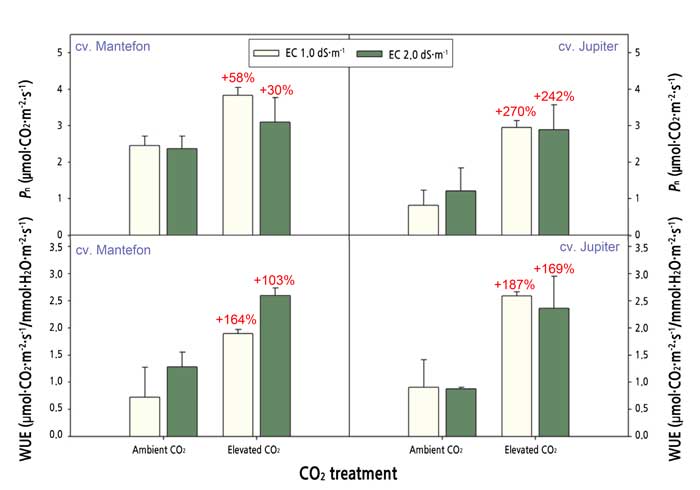The Combined Impact of CO2 and Nutrient Supply on Orchid Flowering Quality
Cho, A.R., Choi, S.H. and Kim, Y.J. 2020. Flowering and photosynthetic responses of Phalaenopsis under elevated CO2 and nutrient supply. Horticultural Science and Technology 38: 595-607.
The commercial production of orchids has been growing steadily in recent years, with particularly high demand among the genus Phalaenopsis. Consequently, the floricultural industry has begun investigating the response of Phalaenopsis cultivation under varying environmental conditions, including atmospheric CO2 enrichment. The present review examines the work of Cho et al. (2020), who studied the response of two Phalaenopsis cultivars (Queen Beer Mantefon and Queen Beer Jupiter) to elevated CO2 and nutrient supply over a period of 21 weeks.
The experiment was conducted in a controlled-environment greenhouse at the Bulmuri Orchid Nursery, Paju, Korea, where twenty-month-old plants were grown in pots under ambient (~400 ppm) or elevated (~650 ppm) CO2 levels (elevated CO2 was only administered for six hours per day between 2200 and 0400 hours). In addition, the researchers supplied the plants with one of two levels of nutrient supply (solutions of two electrical conductivities: EC 1.0 or EC 2.0 dS m-1, administered as N 98 ppm, P 66 ppm and K 202 ppm, or N 220 ppm, P 149 ppm and K 454 ppm, respectively). After five months exposure to the different nutrient and CO2 treatments the authors analyzed their impact(s) on various plant growth and development parameters.
Among their several findings Cho et al. report elevated CO2 significantly improved net photosynthesis, increasing it by 30% (EC 1.0) and 80% (EC 2.0) in cv Mantefon and by a whopping 270% (EC 1.0) and 242% (EC 2.0) in cv Jupiter (see Figure 1). Elevated CO2 also had a positive impact on plant water use efficiency, enhancing this key parameter from 103% to 187% depending on cultivar and nutrient (electrical conductivity) supply.
Other key observations included the production of more flower buds and lateral branches and an increase in flower spike length in the elevated CO2 and high nutrient (EC 2.0) treatment, which findings the authors considered to be favorable in terms of flower quality. Consequently, they concluded elevated CO2 will “improve flowering quality if nutrients [are] sufficiently supplied and optimized for Phalaenopsis cultivation.”

Figure 1. Effect of elevated CO2 and electrical conductivity (EC) on net photosynthesis (Pn) and water use efficiency (WUE) of two Phalaenopsis Queen Beer cultivars (Mantefon or Jupiter) at 21 weeks of treatment. Error bars represent the standard error of the mean. The percentages in red text indicate the increase in Pn or WUE due to elevated CO2 at a given EC. Adapted from Cho et al. (2020).
This article appeared on the CO2 Science website at http://www.co2science.org/articles/V24/jan/a3.php
]]>